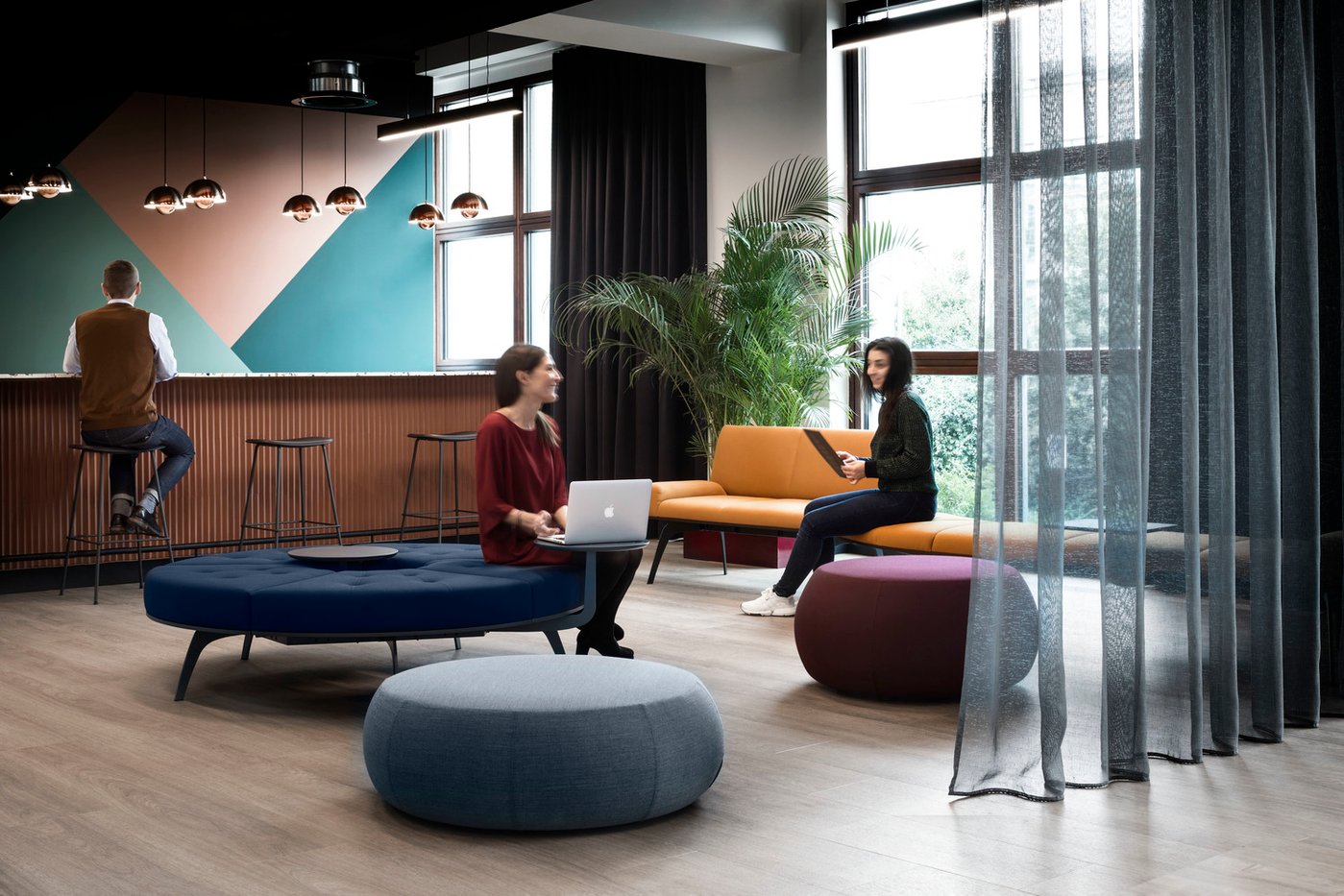Multi-modal design optimizes the workplace | Simon Pole for Forbes

Simon Pole, Principal – Experience Strategy at Downstream Unispace, tells Forbes that it’s time for businesses to create destination workspaces that seamlessly integrate virtual and in-person working That’s where multi-modal working comes in – combining layers of technology and design to create future-proof workplaces that foster success.
Introducing multi-modal design
Multi-modal design is key to creating destination workplaces and ensuring a seamless transition from at-home work to in-person work.
“The future of multi-modal design is being written right now, as designers push to understand more about neuroscience, behavioral science and cognitive load in the pursuit of perfecting the office experience.” - Simon Pole, Principal, Experience Strategy at Downstream
Five ways to bring in elements of multi-modal design
- Plants and greenery: Bring nature into the workplace with materials such as plants, stone, and wood to create a calmer environment and increase the well-being of employees.
- Ergonomics: Ergonomically designed furniture reduces eye strain, back and neck pain, and muscle fatigue.
- Acoustics: Try using sound masking and noise-canceling technology to control acoustics in your space.
- Accomplishments: Remind employees of company accomplishments via design, such as a trophy cabinet, photos of staff engaging in charitable work, or anything that can communicate the bigger picture of what your company is about.
- Curated design moments: Create the brand’s visual narrative with personal, interesting, and culturally relevant items, such as ones that tie into the environmental and social governance of the company. This includes incorporating carpets made from recycled fish nets, which reflects the organization's work to keep garbage out of the ocean.
A key aspect of multi-modal working includes distinct types of spaces within the workplace.
Five ways to bring in elements of multi-modal design
- Deep focus spaces: These are perfect for quiet and focused work.
- Soulful spaces: Often includes comfortable, creative furniture and conversation nooks for exchanging ideas, personal discussions, and social bonding.
- Innovation spaces: With stand-ups, town halls, showcases, whiteboards, and weekly catch-ups, these spaces are perfect for teams to work together to develop and accelerate ideas.
- Formal gathering spaces: From private Zoom booths, to larger in-person meetings, these spaces are meant to make in-person and hybrid meetings more productive and collaborative.
- Community spaces: Anything from a game room to a cafe that brings people together to socialize, relax, and have fun.
Benefits of multi-modal working
- Breaks down silos between teams: In a multi-model environment, employees can easily transition from zoom meetings to in-person engagements, which promotes interactions across teams.
- Provides human connection: Having the option to work from the office allows for an in-person connection that people crave.
- Puts new and experienced workers together: In-person work allows newer workers to work with and learn from more experienced employees.
Simon explains to Forbes that multi-modal working asks not what has been done, but what can be accomplished in optimizing the workspace. Trying some of the strategies above could be the key to getting your people back into the office.
Read full Forbes article here.
About Simon Pole, Principal, Experience Strategy at Downstream
.jpg?width=126&height=126&name=Simon%20Headshot%20(2).jpg) Simon is a globally recognized expert in design and innovation, delivering complex workplace projects across Europe, the Middle East, North America and Asia Pacific. The architect of Unispace’s Propeller framework for the future workplace, he speaks regularly in the media and at industry events across the globe. Pole’s ideas and insights enhance workplace performance and change the way firms do business. As an expert industry thought leader, Pole has authored countless white papers and has been featured in leading publications such as Forbes Magazine and the Law Society Journal. In October 2022, Simon transitioned to Downstream, where he now leads Downstream across the ANZ region.
Simon is a globally recognized expert in design and innovation, delivering complex workplace projects across Europe, the Middle East, North America and Asia Pacific. The architect of Unispace’s Propeller framework for the future workplace, he speaks regularly in the media and at industry events across the globe. Pole’s ideas and insights enhance workplace performance and change the way firms do business. As an expert industry thought leader, Pole has authored countless white papers and has been featured in leading publications such as Forbes Magazine and the Law Society Journal. In October 2022, Simon transitioned to Downstream, where he now leads Downstream across the ANZ region.
Follow Simon on LinkedIn.

%20high%20res.jpg?width=383&height=348&name=Justworks_New_York_N3%20(1)%20high%20res.jpg)
